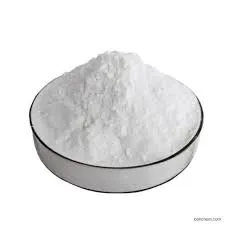- Afrikaans
- Albanian
- Amharic
- Arabic
- Armenian
- Azerbaijani
- Basque
- Belarusian
- Bengali
- Bosnian
- Bulgarian
- Catalan
- Cebuano
- Corsican
- Croatian
- Czech
- Danish
- Dutch
- English
- Esperanto
- Estonian
- Finnish
- French
- Frisian
- Galician
- Georgian
- German
- Greek
- Gujarati
- Haitian Creole
- hausa
- hawaiian
- Hebrew
- Hindi
- Miao
- Hungarian
- Icelandic
- igbo
- Indonesian
- irish
- Italian
- Japanese
- Javanese
- Kannada
- kazakh
- Khmer
- Rwandese
- Korean
- Kurdish
- Kyrgyz
- Lao
- Latin
- Latvian
- Lithuanian
- Luxembourgish
- Macedonian
- Malgashi
- Malay
- Malayalam
- Maltese
- Maori
- Marathi
- Mongolian
- Myanmar
- Nepali
- Norwegian
- Norwegian
- Occitan
- Pashto
- Persian
- Polish
- Portuguese
- Punjabi
- Romanian
- Russian
- Samoan
- Scottish Gaelic
- Serbian
- Sesotho
- Shona
- Sindhi
- Sinhala
- Slovak
- Slovenian
- Somali
- Spanish
- Sundanese
- Swahili
- Swedish
- Tagalog
- Tajik
- Tamil
- Tatar
- Telugu
- Thai
- Turkish
- Turkmen
- Ukrainian
- Urdu
- Uighur
- Uzbek
- Vietnamese
- Welsh
- Bantu
- Yiddish
- Yoruba
- Zulu
Nov . 07, 2024 14:46 Back to list
Understanding Albendazole Anthelmintic Dosage for Effective Parasite Treatment and Management
Understanding Albendazole Dosage and Anthelmintic Treatment
Albendazole is a broad-spectrum anthelmintic (anti-parasitic) medication commonly used to treat various worm infections. It is effective against a range of parasitic conditions, including those caused by tapeworms, roundworms, and flukes. As an active ingredient in many anthelmintic treatments, understanding the appropriate dosage of albendazole is crucial for effective treatment and minimizing adverse effects.
Mechanism of Action
Albendazole works by inhibiting the polymerization of tubulin into microtubules, a structure essential for cell division in helminths (worms). By disrupting this process, albendazole effectively immobilizes and eventually kills the parasites. It is absorbed in the intestine and metabolized in the liver, making it primarily effective against intestinal parasites.
Indications for Use
Albendazole is indicated for several parasitic infections, including
1. Neurocysticercosis A serious infection caused by the larvae of the pork tapeworm. 2. Hydatid disease Cystic infections caused by Echinococcus granulosus or Echinococcus multilocularis. 3. Ascariasis An infection caused by roundworms. 4. Enterobiasis An infection caused by pinworms. 5. Other soil-transmitted helminth infections Such as hookworm and whipworm infections.
Recommended Dosages
The dosage of albendazole varies based on the infection type, patient age, and body weight. Here are some common guidelines
1. Neurocysticercosis The typical adult dose is 15 mg/kg/day, divided into two doses. Treatment usually lasts for eight days but can be adjusted based on the severity and physician’s recommendation.
2. Hydatid disease The adult dose ranges from 10 to 15 mg/kg/day, also divided into two doses. The treatment duration can extend for several weeks, often requiring monitoring of liver function and cyst status.
albendazole anthelmintic dosage

3. Intestinal helminth infections For adults and children over two years of age, the standard single dose is usually 400 mg. This dosage can be repeated after three weeks for persistent infections.
4. In children under two years of age, the dosage should be carefully adjusted based on weight, typically around 10 mg/kg as a single dose.
Administration Tips
Albendazole can be taken with or without food, although taking it with fatty meals can increase absorption and effectiveness. It is critical to follow the physician's instructions precisely and complete the full course of treatment, even if symptoms improve, to ensure that all parasites are eliminated.
Adverse Effects
While albendazole is generally well-tolerated, some people may experience side effects, including
- Nausea and vomiting - Abdominal pain - Dizziness - Headaches
Rarely, severe allergic reactions may occur. Patients should report any unusual symptoms to their healthcare provider immediately.
Conclusion
Albendazole is a vital medication for treating various parasitic infections. Proper dosing based on the type of infection and individual patient factors is crucial for optimal treatment outcomes. As with any medication, adherence to prescribed dosages and duration significantly affects the effectiveness of the treatment and the management of side effects. Always consult with a healthcare provider before starting treatment with albendazole to ensure it is appropriate for your situation and to obtain personalized medical advice.
-
Guide to Oxytetracycline Injection
NewsMar.27,2025
-
Guide to Colistin Sulphate
NewsMar.27,2025
-
Gentamicin Sulfate: Uses, Price, And Key Information
NewsMar.27,2025
-
Enrofloxacin Injection: Uses, Price, And Supplier Information
NewsMar.27,2025
-
Dexamethasone Sodium Phosphate Injection: Uses, Price, And Key Information
NewsMar.27,2025
-
Albendazole Tablet: Uses, Dosage, Cost, And Key Information
NewsMar.27,2025













